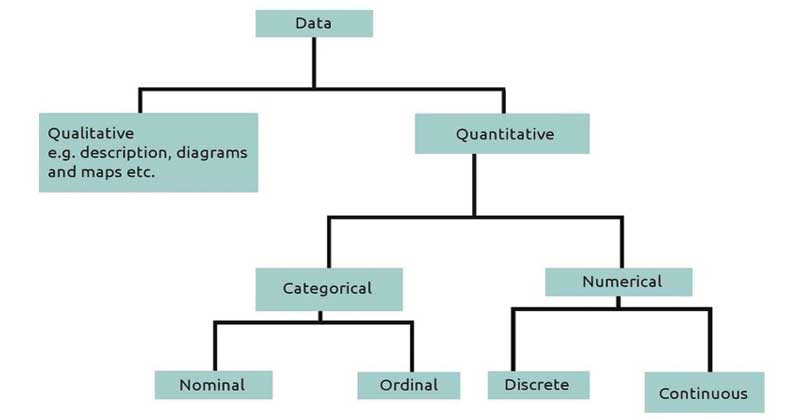- Data is a set of values of subjects with respect to qualitative or quantitative variables.
- Data is raw, unorganized facts that need to be processed. Data can be something simple and seemingly random and useless until it is organized.
- When data is processed, organized, structured or presented in a given context so as to make it useful, it is called information.
- Information, necessary for research activities are achieved in different forms.
- The main forms of the information available are:
- Primary data
- Secondary data
- Cross-sectional data
- Categorical data
- Time series data
- Spatial data
- Ordered data

Interesting Science Videos
Primary Data
- Primary data is an original and unique data, which is directly collected by the researcher from a source according to his requirements.
- It is the data collected by the investigator himself or herself for a specific purpose.
- Data gathered by finding out first-hand the attitudes of a community towards health services, ascertaining the health needs of a community, evaluating a social program, determining the job satisfaction of the employees of an organization, and ascertaining the quality of service provided by a worker are the examples of primary data.
Secondary Data
- Secondary data refers to the data which has already been collected for a certain purpose and documented somewhere else.
- Data collected by someone else for some other purpose (but being utilized by the investigator for another purpose) is secondary data.
- Gathering information with the use of census data to obtain information on the age-sex structure of a population, the use of hospital records to find out the morbidity and mortality patterns of a community, the use of an organization’s records to ascertain its activities, and the collection of data from sources such as articles, journals, magazines, books and periodicals to obtain historical and other types of information, are examples of secondary data.
Cross-Sectional Data
- Cross-sectional data is a type of data collected by observing many subjects (such as individuals, firms, countries, or regions) at the same point of time, or without regard to differences in time.
- It is the data for a single time point or single space point.
- This type of data is limited in that it cannot describe changes over time or cause and effect relationships in which one variable affects the other.
Categorical Data
- Categorical variables represent types of data which may be divided into groups. Examples of categorical variables are race, sex, age group, and educational level.
- The data, which cannot be measured numerically, is called as the categorical data. Categorical data is qualitative in nature.
- The categorical data is also known as attributes.
- A data set consisting of observation on a single characteristic is a univariate data set. A univariate data set is categorical if the individual observations are categorical responses.
Example of categorical data: Intelligence, Beauty, Literacy, Unemployment
Time-Series Data
- Time series data occurs wherever the same measurements are recorded on a regular basis.
- Quantities that represent or trace the values taken by a variable over a period such as a month, quarter, or year.
- The values of different phenomenon such as temperature, weight, population, etc. can be recorded over a different period of time.
- The values of the variable remain increasing or decreasing or constant.
- The data according to time periods is called time-series data. e.g. population in a different time period.
Spatial Data
- Also known as geospatial data or geographic information it is the data or information that identifies the geographic location of features and boundaries on Earth, such as natural or constructed features, oceans, and more.
- Spatial data is usually stored as coordinates and topology and is data that can be mapped.
- Spatial data is used in geographical information systems (GIS) and other geolocation or positioning services.
- Spatial data consists of points, lines, polygons and other geographic and geometric data primitives, which can be mapped by location, stored with an object as metadata or used by a communication system to locate end-user devices.
- Spatial data may be classified as scalar or vector data. Each provides distinct information pertaining to geographical or spatial locations.
Ordered Data
- Data according to ordered categories is called as ordered data.
- Ordered data is similar to a categorical variable except that there is a clear ordering of the variables.
- For example for category economic status ordered data may be, low, medium and high.
References
- Khatiwada, R. P., Pradhan, B. L. & Poudyal, N. (2015). Research Methodology. KEC Publication, Kathmandu.
- Kumar, Ranjit. Research Methodology: A Step-by-Step Guide for Beginners. Los Angeles: SAGE, 2011. Print.
- https://communitymedicine4asses.wordpress.com/2015/10/29/review-primary-and-secondary-data/
- https://communitymedicine4asses.com/2013/01/07/types-of-data-primary-and-secondary-data/
- https://www.techopedia.com/definition/871/spatial-data
- http://www.stat.yale.edu/Courses/1997-98/101/catdat.htm
- http://methods.sagepub.com/reference/encyclopedia-of-survey-research methods/n119.xml
- https://math.tutorvista.com/statistics/categorical-data.html
- http://www.businessdictionary.com/definition/time-series-data.html
- https://www.psc.isr.umich.edu/pubs/pdf/rr14-818.pdf
